This exercise was conducted as a part of Computational Design course. The main objective is to create animated architectural system using parametric design tools. The task is to illustrate not only variability in the final result performance, but demonstrate the process of creation supplying results with data.
REFERENCE
First of all, the initial reference for the task was to theorize and experiment with one of the ideas of non-linear and kinetic architecture. The conceptual project “Topotransegrity” designed by Robert Neumayr investigates architecture of public spaces through the lens of responsive and non-passive paradigm.
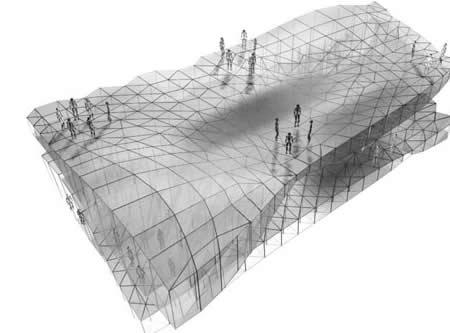
Example / Parametric architecture
Project along with some physical prototypes is a new type of structure constantly monitoring and adapting to its environment. It creates space when needed and shrinks it according to the flow of people inside it’s layers.
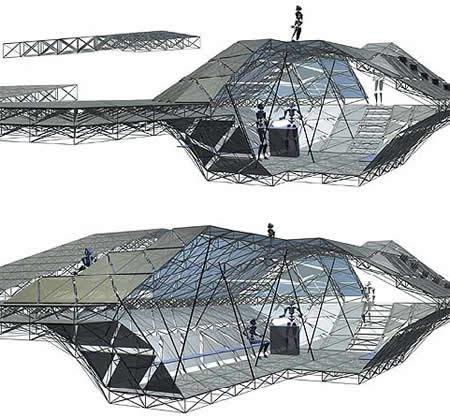
Example: Structure / Parametric architecture
As a result, unpredictable geometry constantly changes spatial “spacescape”. This general idea was selected as a key to design conceptual parametric systems of my own.
PROCESS
The design separated into these steps for parametrization:
- Create an frame system structure in a responsive manner to the grid settings;
- Develop the support system between elevations;
- Create surface system for floors and ceilings;
- Link virtual visitor movement to said system performance;
- Capture the stages into a video;
- Animate performance of the system all together.
Further more, to clarify the end result I will specify intended control elements the definition has to incorporate:
- Geometrical size of the structure overall (including sector width and depth, amount of sections, etc.);
- Vertical dimensions (floor and initial structure heights);
- Randomization seed for floor system;
- Virtual people amounts generic random seeds for movement;
- Final set-up camera control.
Following screenshots capture main parts of the script.
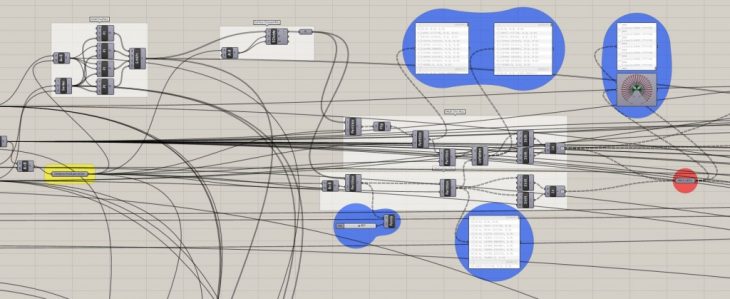
Script: Main Mesh / Parametric architecture
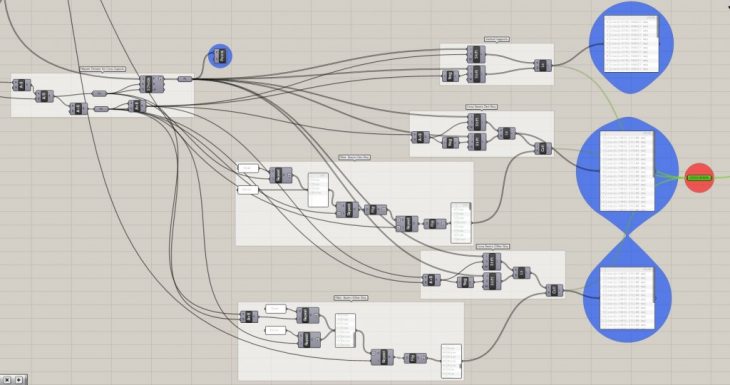
Script: Support Beams / Parametric architecture
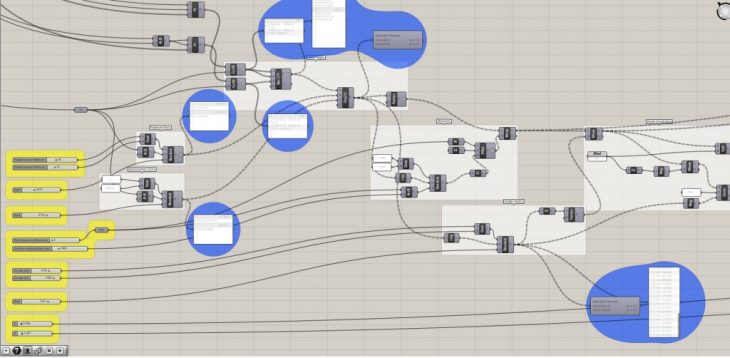
Script: People / Parametric architecture
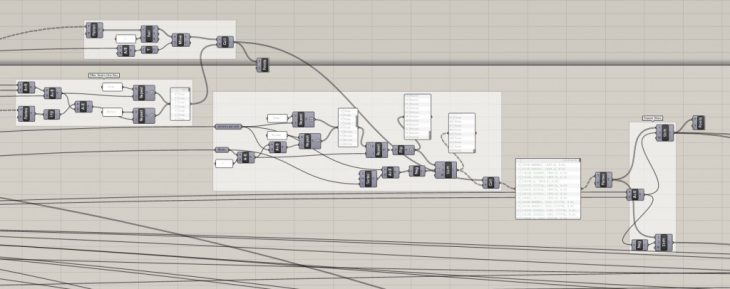
Script: Surface Preparation / Parametric architecture
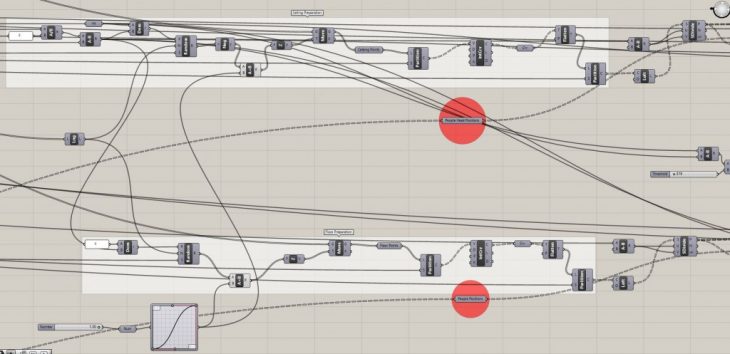
Script: Surfaces / Parametric architecture
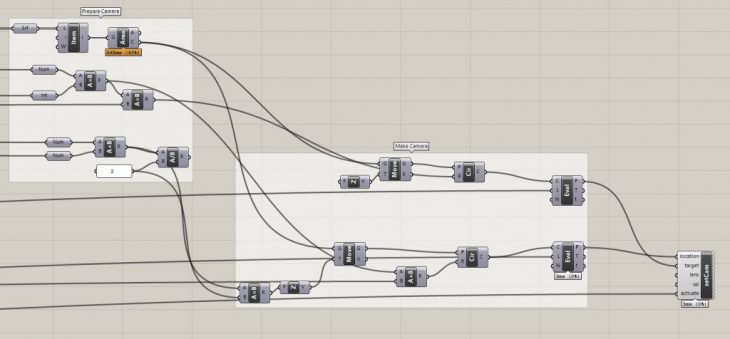
Script: Camera / Parametric architecture
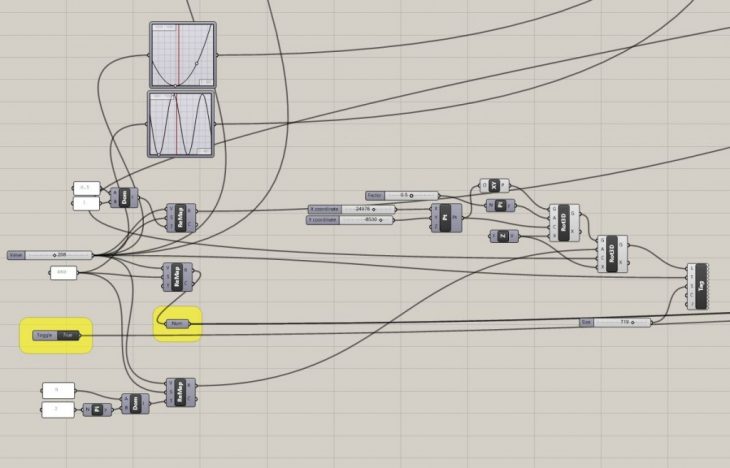
Script: Animation / Parametric architecture
RESULT

Script: Controls / Parametric architecture
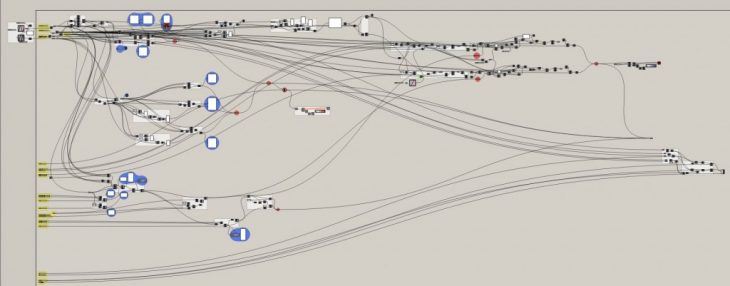
Script / Parametric architecture
The result provides a framework for a complex and varying kinetic system. The design provides user with the experience such system could bring to the public space domain in the scale of architecture.
In conclusion, concepts like kinetic architecture viewed with traditional tools and methods are hard to wrap your mind around not to mention to control as a design outcome. The result by definition is non-specific and shifting. However, “Algorithm Aided Design” if used cautiously provides you with possibility of gradual step-by-step immersion into the uncontrollable results.
Computational Design // Assignment 2 is a project of IaaC, Institute for Advanced Architecture of Catalonia
Developed at Master in Advanced Architecture in 2017 by:
Student: Daniil Koshelyuk
Faculty: Aldo ?Sollazzo & Rodrigo ?Aguirre
Reference from: